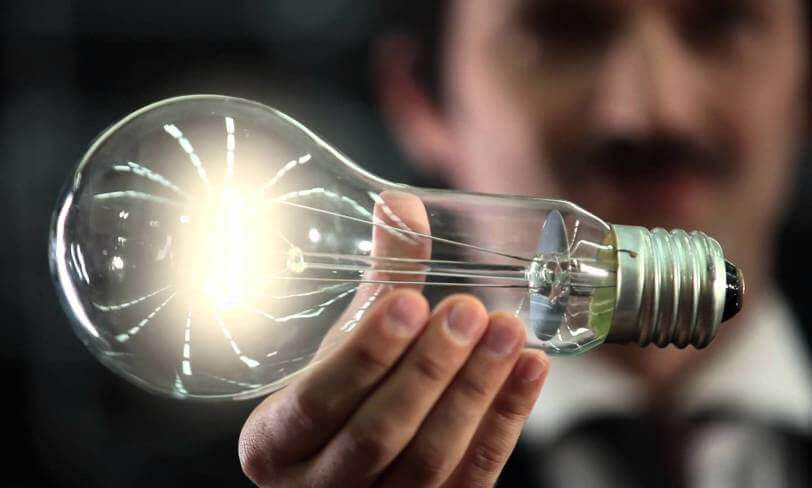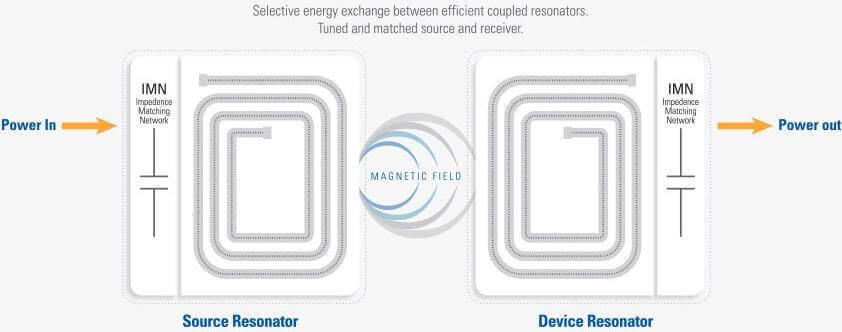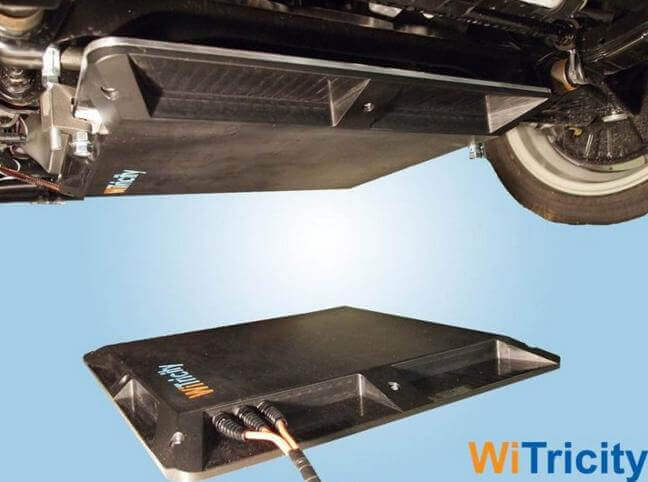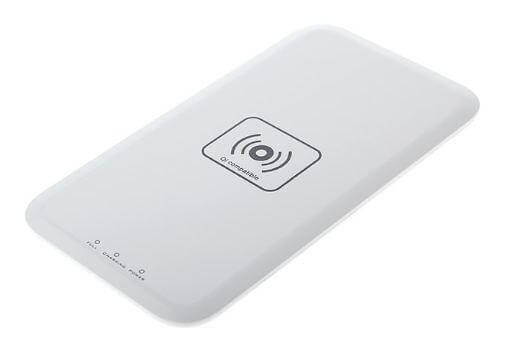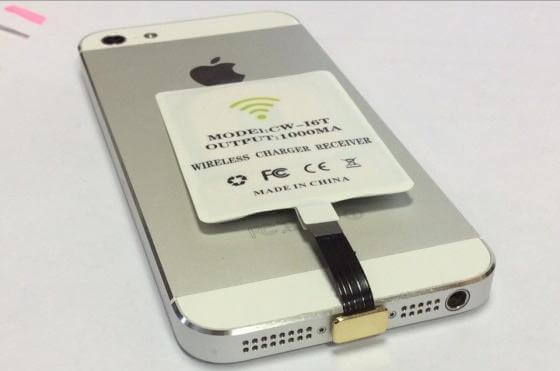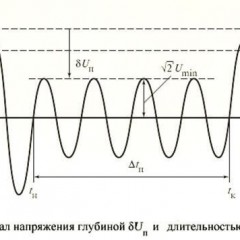Power transmission over a distance without wires
The history of development
The development of electric power transmission without wires over a distance is associated with progress in the field of radio engineering, since both processes are of the same nature. The inventions in both areas are associated with the study of the method of electromagnetic induction and its effects on the formation of electric current.
In 1820 A.M. Ampere discovered the law of interaction of currents, which consisted in the fact that if the current flows along two closely located conductors in one direction, then they are attracted to each other, and if in different, then they repel.
In 1831, M. Faraday established during experiments that an alternating (varying in magnitude and direction in time) magnetic field generated by the flow of electric current induces (induces) currents in nearby conductors. Those. there is a transmission of electricity without wires. In detail Faraday's law we considered in the article earlier.
Well, after J. C. Maxwell, 33 years later, in 1864, he transferred the Faraday experimental data to a mathematical form, and Maxwell's equations themselves are fundamental in electrodynamics. They describe how electric current and electromagnetic field are related.
The existence of electromagnetic waves was confirmed in 1888 by G. Hertz, in the course of his experiments with a spark transmitter with a chopper on a Rumkorf coil. Thus, EM waves with a frequency of up to half a gigahertz were produced. It is worth noting that these waves could be received by several receivers, but they must be tuned in resonance with the transmitter. The range of the installation was around 3 meters. When a spark occurred in the transmitter, the same occurred on the receivers. In fact, this is the first experiments on the transmission of electricity without wires.
In-depth research was conducted by the famous scientist Nikola Tesla. He studied alternating current of high voltage and frequency in 1891. As a result, the conclusions were drawn:
For each specific purpose, you need to tune the installation to the appropriate frequency and voltage. However, high frequency is not a prerequisite. The best results were achieved at a frequency of 15-20 kHz and a transmitter voltage of 20 kV. To obtain a high-frequency current and voltage, an oscillatory capacitor discharge was used. Thus, it is possible to transmit both electricity and produce light.
The scientist in his speeches and lectures demonstrated the glow of lamps (vacuum tubes) under the influence of a high-frequency electrostatic field.Actually, the main conclusions of Tesla were that even in the case of using resonant systems, a lot of energy cannot be transmitted using an electromagnetic wave.
In parallel, a number of scientists until 1897 were engaged in similar studies: Jagdish Boche in India, Alexander Popov in Russia and Guglielmo Marconi in Italy.
Each of them has contributed to the development of wireless power transmission:
- J. Boche in 1894, ignited gunpowder, transmitting electricity to a distance without wires. He did this at a demonstration in Calcutta.
- A. Popov in April 25 (May 7), 1895 using the Morse code transmitted the first message.
- In 1896, G. Marconi in Great Britain also transmitted a radio signal (Morse code) over a distance of 1.5 km, later 3 km on the Salisbury Plain.
It is worth noting that the work of Tesla, underestimated at one time and lost for centuries, exceeded the work of his contemporaries in terms of parameters and capabilities. At the same time, namely in 1896, his devices transmitted a signal over long distances (48 km), unfortunately it was a small amount of electricity.
And by 1899, Tesla came to the conclusion:
The failure of the induction method seems enormous compared with the method of excitation of a charge of earth and air.
These conclusions will lead to other studies, in 1900 he managed to power a lamp from a coil carried out in the field, and in 1903 the Wondercliff tower on Long Island was launched. It consisted of a transformer with a grounded secondary winding, and on its top stood a copper spherical dome. With its help, it turned out to light 200 50-watt lamps. At the same time, the transmitter was 40 km from it. Unfortunately, these studies were interrupted, funding was discontinued, and free transmission of electricity without wires was not economically beneficial for businessmen. The tower was destroyed in 1917.
Nowadays
Wireless power transmission technologies have taken a big step forward, mainly in the field of data transmission. So significant success was achieved by radio communications, wireless technologies such as Bluetooth and Wi-fi. There were no special innovations, mainly the frequencies changed, the signal encryption methods, the signal representation switched from analog to digital.
If we talk about the transmission of electricity without wires to power electrical equipment, it is worth mentioning that in 2007, researchers from the Massachusetts Institute transferred 2 meters of energy and lit a 60-watt bulb in this way. This technology is called WiTricity, it is based on the electromagnetic resonance of the receiver and transmitter. It is worth noting that the receiver receives about 40-45% of the electricity. A generalized diagram of a device for transmitting energy through a magnetic field is shown in the figure below:
The video shows an example of the application of this technology for charging an electric vehicle. The bottom line is that a receiver is attached to the bottom of the electric car, and a transmitter is installed on the floor in the garage or elsewhere.
You must park the machine so that the receiver is positioned above the transmitter. The device transfers a lot of electricity without wires - from 3.6 to 11 kW per hour.
The company in the future is considering the provision of electricity with such technology and household appliances, as well as the entire apartment as a whole. In 2010, Haier introduced a wireless TV that receives power using similar technology, as well as a wireless video signal. Other leading companies, such as Intel and Sony, are also carrying out such developments.
In everyday life, wireless power transmission technologies are widely used, for example, to charge a smartphone. The principle is similar - there is a transmitter, there is a receiver, the efficiency is about 50%, i.e. for a charge of 1A, the transmitter will consume 2A. The transmitter is usually called a base in such sets, and the part that connects to the phone is the receiver or antenna.
Another niche is the wireless transmission of electricity using microwaves or a laser.This provides a greater radius of action than a couple of meters, which provides magnetic induction. In the microwave method, a rectenna (non-linear antenna for converting an electromagnetic wave to direct current) is installed on the receiving device, and the transmitter directs its radiation in this direction. In this embodiment of the wireless transmission of electricity there is no need for direct visibility of objects. The downside is that microwave radiation is not safe for the environment.
We recommend watching a video on which the issue is considered in more detail:
In conclusion, I would like to note that wireless transmission of electricity is certainly convenient for use in everyday life, but it has its pros and cons. If we talk about the use of such technologies to charge gadgets, the plus is that you do not have to constantly insert and remove the plug from the connector of your smartphone, respectively, the connector will not fail. The downside is the low efficiency, if for a smartphone the energy loss is not significant (a few watts), then for wireless charging of an electric car - this is a very big problem. The main goal of development in this technology is to increase the efficiency of the installation, because against the background of a widespread race for energy conservation, the use of low-efficiency technologies is very doubtful.
Similar materials:

